Two years ago, ISIS fighters and allied groups attacked Iraqi police and soldiers in Fallujah, a large city about 30 miles west of Baghdad, and took control of the region. Two years later and Iraqi pro-government forces, popular mobilization forces, and tribesmen, backed by a US-led coalition, have pushed to the center of Fallujah, retaking much of the city. Beginning in late May, the offensive became a weeks-long siege as surrounding towns and villages were recaptured. While more than 50,000 civilians remain in Fallujah, more than 40,000 are estimated to have fled—risking their lives to do so, as reports have been made that ISIS militants are shooting residents who try to leave. ISIS resistance has so far been lighter than expected, but booby traps and mines left behind still pose a risk. Iraqi forces plan to clear central Fallujah, and advance to its northern neighborhoods next.
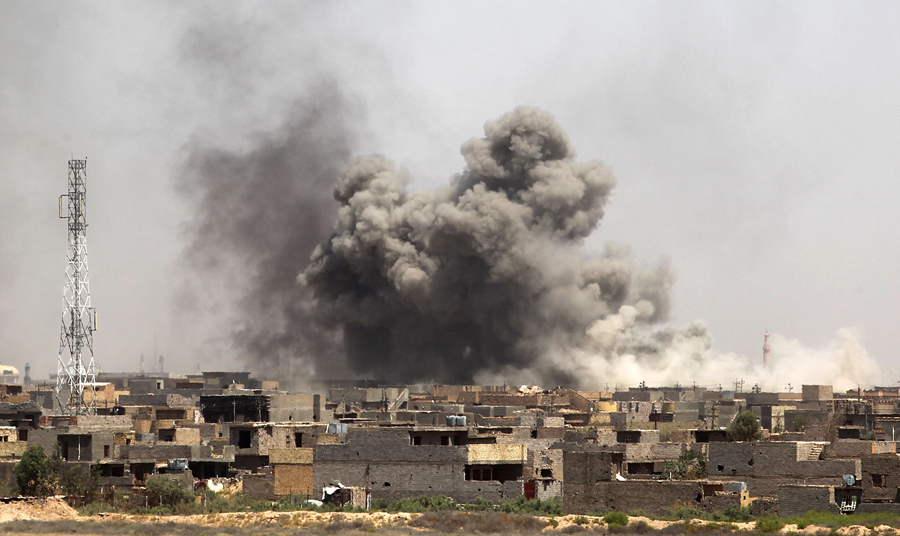 Smoke billows from Fallujah's southern Shuhada neighbourhood following shelling during an operation by Iraqi government forces, backed by air support from the US-led coalition, to regain control of the area from ISIS on June 13, 2016.Ahmad Al-Rubaye / AFP / Getty
Smoke billows from Fallujah's southern Shuhada neighbourhood following shelling during an operation by Iraqi government forces, backed by air support from the US-led coalition, to regain control of the area from ISIS on June 13, 2016.Ahmad Al-Rubaye / AFP / Getty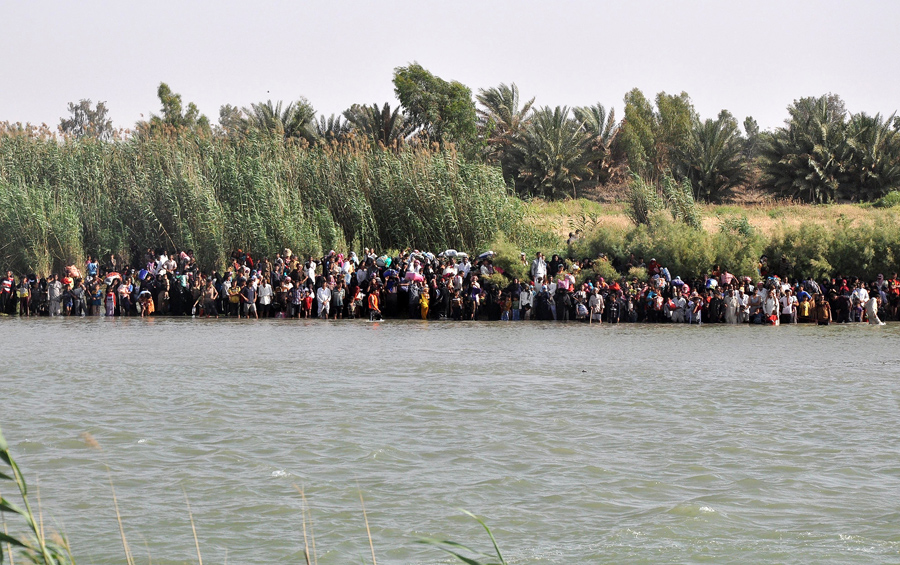 Internally displaced civilians from Fallujah flee their homes, gathering on the edge to cross the Euphrates River, during fighting between Iraqi security forces and ISIS on June 2, 2016.AP
Internally displaced civilians from Fallujah flee their homes, gathering on the edge to cross the Euphrates River, during fighting between Iraqi security forces and ISIS on June 2, 2016.AP Internally displaced civilians from Fallujah flee their homes by crossing the Euphrates River, heading to a safe haven during fighting between Iraqi security forces and ISIS, outside Fallujah, west of Baghdad, on June 2, 2016.AP
Internally displaced civilians from Fallujah flee their homes by crossing the Euphrates River, heading to a safe haven during fighting between Iraqi security forces and ISIS, outside Fallujah, west of Baghdad, on June 2, 2016.AP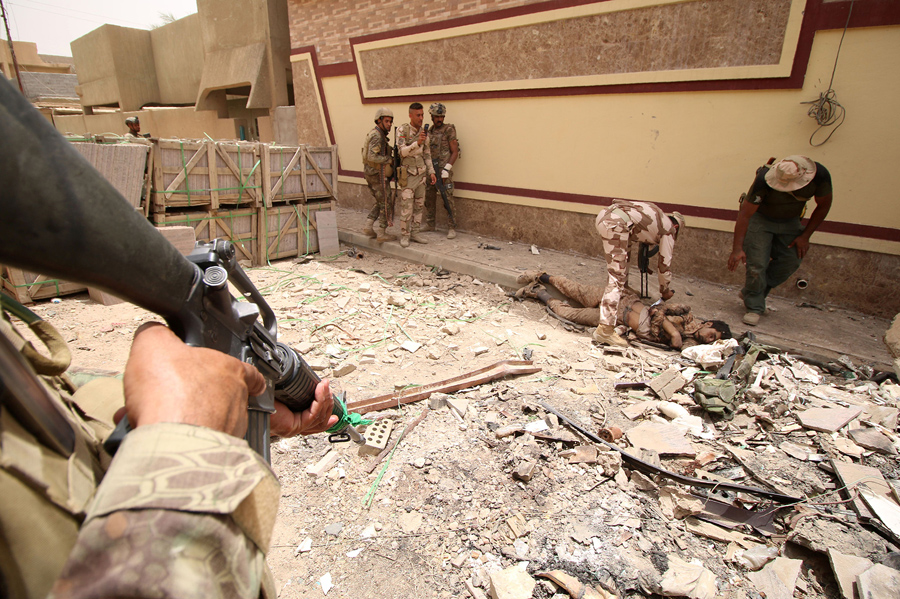 Iraqi pro-government forces check an unidentified body as they patrol the al-Dhubat II, or Officers, neighborhood of Fallujah as they try to clear the city of ISIS fighters still holed up on June 19, 2016.Haidar Mohammed Ali / AFP / Getty
Iraqi pro-government forces check an unidentified body as they patrol the al-Dhubat II, or Officers, neighborhood of Fallujah as they try to clear the city of ISIS fighters still holed up on June 19, 2016.Haidar Mohammed Ali / AFP / Getty An Iraqi woman sits in a minibus along with other families fleeing Fallujah, during a military operation to retake the city, outside Camp Tariq, on the outskirts of Fallujah, on June 6, 2016.Maya Alleruzzo / AP
An Iraqi woman sits in a minibus along with other families fleeing Fallujah, during a military operation to retake the city, outside Camp Tariq, on the outskirts of Fallujah, on June 6, 2016.Maya Alleruzzo / AP Displaced Iraqis who were evacuated from their villages by Iraqi government forces south of the besieged ISIS bastion of Fallujah wait at a safe zone in Subayat, during a military operation to retake territory from the jihadists on June 12, 2016.Moadh Al-Dulaimi / AFP / Getty
Displaced Iraqis who were evacuated from their villages by Iraqi government forces south of the besieged ISIS bastion of Fallujah wait at a safe zone in Subayat, during a military operation to retake territory from the jihadists on June 12, 2016.Moadh Al-Dulaimi / AFP / Getty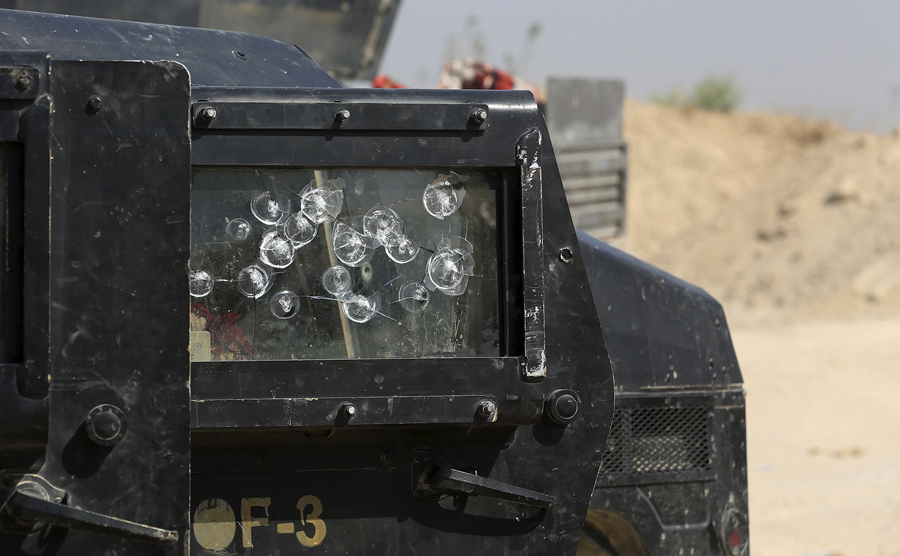 Impacts made by ISIS militant bullets mark the windshield of an Iraqi counterterror forces vehicle during fighting in the Nuaimiya neighborhood of Fallujah on June 1, 2016.Khalid Mohammed / AP
Impacts made by ISIS militant bullets mark the windshield of an Iraqi counterterror forces vehicle during fighting in the Nuaimiya neighborhood of Fallujah on June 1, 2016.Khalid Mohammed / AP Smoke rises from ISIS positions after an airstrike by U.S.-led coalition warplanes in Fallujah, as Iraqi security forces and allied Shiite Popular Mobilization Forces and Sunni tribal fighters take combat positions on May 23, 2016.Rwa Faisal / AP
Smoke rises from ISIS positions after an airstrike by U.S.-led coalition warplanes in Fallujah, as Iraqi security forces and allied Shiite Popular Mobilization Forces and Sunni tribal fighters take combat positions on May 23, 2016.Rwa Faisal / AP A burned-out tank in a field, photographed as Iraqi government forces supported by Popular Mobilization units engaged in combat in the Saqlawiyah area, northwest of Fallujah, on June 2, 2016.Ahmad Al-Rubaye / AFP / Getty
A burned-out tank in a field, photographed as Iraqi government forces supported by Popular Mobilization units engaged in combat in the Saqlawiyah area, northwest of Fallujah, on June 2, 2016.Ahmad Al-Rubaye / AFP / Getty Grenades and shells lie on the ground during fighting between Iraqi counterterrorism forces and ISIS militants in the Nuaimiya neighborhood of Fallujah on June 1, 2016.Khalid Mohammed / AP
Grenades and shells lie on the ground during fighting between Iraqi counterterrorism forces and ISIS militants in the Nuaimiya neighborhood of Fallujah on June 1, 2016.Khalid Mohammed / AP A member of Iraqi pro-government forces fires a rocket-propelled grenade during clashes with ISIS fighters as they try to enter the eastern Askari neighborhood of Fallujah on June 19, 2016.Haidar Mohammed Ali / AFP / Getty
A member of Iraqi pro-government forces fires a rocket-propelled grenade during clashes with ISIS fighters as they try to enter the eastern Askari neighborhood of Fallujah on June 19, 2016.Haidar Mohammed Ali / AFP / Getty Fighters from the Iraqi Shi'ite Badr Organization walk past a poster depicting images of former Iraqi President Saddam Hussein on the outskirts of Fallujah on May 28, 2016.Thaier Al-Sudani / Reuters
Fighters from the Iraqi Shi'ite Badr Organization walk past a poster depicting images of former Iraqi President Saddam Hussein on the outskirts of Fallujah on May 28, 2016.Thaier Al-Sudani / Reuters Internally displaced Iraqis at a camp outside Fallujah on June 14, 2016. The U.N. estimates about 50,000 civilians were trapped inside the city and that 42,000 people have fled Fallujah since a military operation to retake the city began in late May.Hadi Mizban / AP
Internally displaced Iraqis at a camp outside Fallujah on June 14, 2016. The U.N. estimates about 50,000 civilians were trapped inside the city and that 42,000 people have fled Fallujah since a military operation to retake the city began in late May.Hadi Mizban / AP Smoke rises after airstrikes by U.S.-led coalition warplanes as Iraqi security forces advance their positions during heavy fighting against ISIS in Fallujah on June 15, 2016.Anmar Khalil / AP
Smoke rises after airstrikes by U.S.-led coalition warplanes as Iraqi security forces advance their positions during heavy fighting against ISIS in Fallujah on June 15, 2016.Anmar Khalil / AP
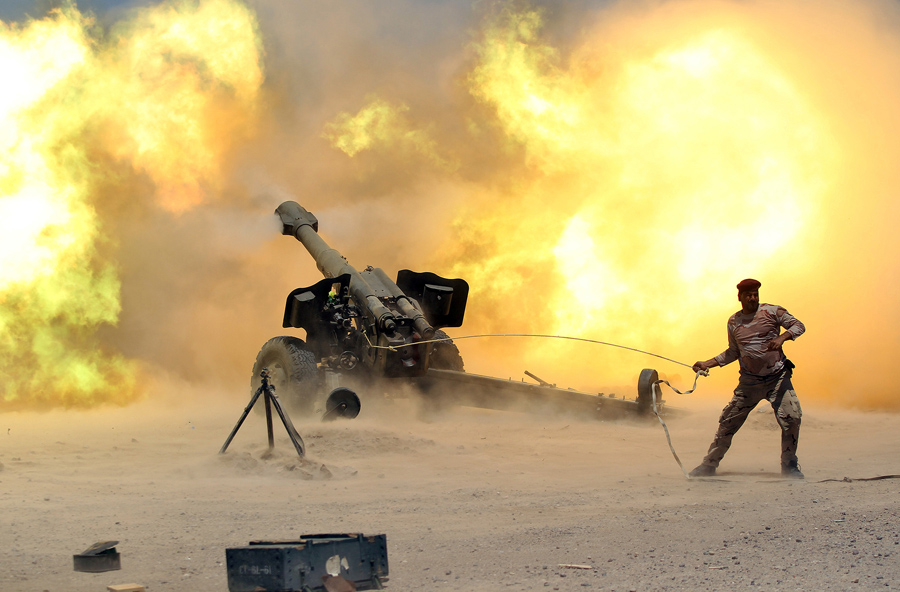





















댓글 없음:
댓글 쓰기